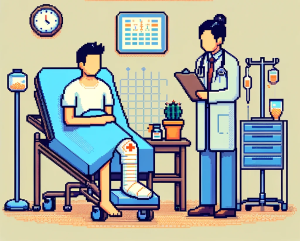
89% Drop in Child Cyclist Deaths—But Adult Fatalities Tripled
Thirteen-year-old Christopher Kelley wasn’t wearing a helmet when a car struck him on a quiet Maryland road in 1989. His tragic death sparked something his community had never seen before: 50 of his eighth-grade classmates rallying lawmakers to pass a local helmet law.
That single story helps explain how America’s patchwork of bicycle helmet mandates came to be, not from federal fiat or sweeping legislation, but from grassroots grief, medical evidence, and persistent public health advocacy. Along the way, a sharp debate ignited: Do mandatory helmet laws save lives, or do they go too far in policing personal choices?
This is the story behind the rise, resistance, and ripple effects of mandatory bicycle helmet laws in the United States.
Pedals and Progress: Bicycles Boom, Injuries Follow
By the 1970s, cycling was no longer just child’s play. Amid environmental concerns, oil crises, and a new fitness wave, adults returned to biking in droves. But as more people hit the streets, emergency rooms saw a surge in cycling-related injuries, especially devastating head trauma.
Doctors raised the alarm. Pediatricians wrote about an “epidemic” of craniofacial injuries. The National Safety Council noted that children aged 5–14 accounted for two-thirds of bike-related traffic deaths. By 1980, nearly 1,000 cyclists were dying annually, and hundreds of thousands more were hospitalized.
And yet, helmet use was virtually nonexistent. Even educational materials like Stanford’s Sprocket Man comic book offered safety tips without a single helmet in sight.
The problem? There wasn’t even a helmet built specifically for cycling. Yet.
From Hockey Helmets to the Bell Biker
Before the 1970s, protective gear for cyclists ranged from colonial-style pith helmets to football-like leather caps. None offered meaningful protection.
That changed in 1975 with the launch of the Bell Biker, the first modern bike helmet, designed with a hard plastic shell and polystyrene foam. Shortly after, nonprofits like the Snell Memorial Foundation and Washington Area Bicyclist Association (WABA) began testing and rating helmets for real-world use. A key takeaway: 80–85% of bike deaths involved head injuries, many preventable with a decent helmet.
The message began to stick. Cycling magazines showed only helmeted riders. Bike races required protective gear. Public health researchers started advocating for helmet mandates, especially for kids.
But history had already shown that mandating helmets was controversial business.
The Motorcycle Helmet Law Backlash
Helmet mandates weren’t new. Between 1967 and 1975, nearly every U.S. state enacted motorcycle helmet laws. But when the federal government repealed highway safety penalties in 1976, backlash was swift—28 states rolled back those laws by 1980.
The precedent was clear: Americans bristle when safety laws collide with perceived personal freedom.
Knowing this, bicycle safety advocates focused on children. The evidence was strongest, the stakes were highest, and the politics were less fraught. If kids had to wear seatbelts and bike helmets, it felt more like common sense than coercion.
From Local Tragedy to Legal Action
Christopher Kelley’s death in Maryland marked a turning point. His classmates’ activism led to the nation’s first mandatory bike helmet law in 1990. Initially intended just for children under 16, the law was controversially expanded to all riders—before being scaled back again after public outcry.
That same year, another town—Beachwood, Ohio—enacted its own helmet law, also spurred by doctors treating traumatic injuries. But unlike Maryland, Beachwood paired its policy with a robust education campaign: helmet giveaways, school assemblies, and even cheeseburger coupons for kids spotted wearing helmets.
The result? Beachwood had the highest helmet use rate in the country.
When Science and Stories Align
Throughout the late ’80s and early ’90s, medical journals churned out study after study showing helmets’ life-saving potential:
- A 1983 Florida study found fatal cyclists had head or neck injuries 86% of the time.
- A 1987 pediatric study noted that nearly half of all serious injuries in kids involved the head or neck—and virtually none wore helmets.
- By 1991, JAMA compared unhelmeted cycling deaths to pre-vaccine child mortality rates.
The message was reinforced with powerful anecdotes: kids on respirators, near-death crashes, and miraculous saves—thanks to a helmet.
The Power—and Politics—of Protection
Helmet laws began to spread across cities and states. In 1992, New Jersey became the first state to mandate helmets for children under 14. Two years later, California upped the age to 18. But attempts to require helmets for adults faced stiff resistance—too paternalistic, some argued, too “nanny state.”
Despite this, the laws worked. Between 1975 and 2018, child cyclist deaths dropped by 89%, even as adult fatalities tripled. While helmets weren’t the only factor, they played a crucial role, especially in communities where education and enforcement worked hand-in-hand.
What’s Next for Helmet Laws?
Helmet mandates continue to vary across the U.S. Most states require helmets for young riders, but none have universal, all-ages mandates. And with the rise of bike-share programs and e-bikes, the landscape is changing again, raising new questions about who is protected, how, and why.
Meanwhile, the age-old tension between public health protection and personal freedom remains unresolved. Do we nudge people toward safety, or push them? Do we treat helmets like vaccines and seatbelts, or something else entirely?
As cities grapple with cyclist safety, the story of America’s helmet laws offers a roadmap: blend data with compassion, and pair policy with community power.
Join the Conversation
- Should helmet laws apply to everyone—or just kids?
- What’s the right balance between safety and personal choice?
- How could your city encourage helmet use without mandates?



